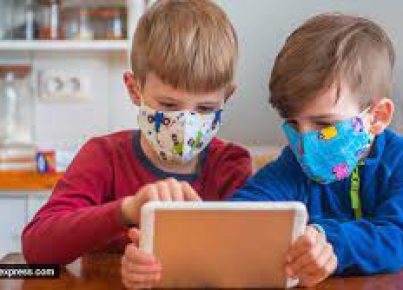In the era of the COVID-19 pandemic, it has become vital for everyone to take personal responsibility for their health and safety. One of the necessary practices includes following social distancing guidelines to limit the spread of the virus. This concern can be amplified when it involves our children in a school setting, especially when we witness protocols being ignored in a class filled with young students, such as first graders. In such situations, what steps should a concerned parent or teacher take? Here are some essential recommendations in response to this dilemma.
1. Communicate with the Teacher
Approach the first-grade teacher diplomatically and express your concerns about the lack of social distancing in their classroom. Open communication is crucial as there might be circumstances you’re unaware of. The teacher may be struggling with implementing distancing measures due to class size or other factors and may appreciate any guidance or suggestions that you have to offer.
2. Speak with School Administration
If addressing the issue directly with the teacher doesn’t yield any improvement, arrange a meeting with school administration staff like the principal or an educational director. Explain your concerns and how they affect not just your child, but also other students at risk of exposure to COVID-19 due to inadequate social distancing practices within that particular class.
3. Collaborate on Solutions
Try to work together with teachers and administration officials to find potential solutions for maintaining social distance between children in a classroom setting. Share research-based suggestions on classroom layout modifications and best practices used by other educational institutions during this unique time.
4. Advocate for Multifaceted Safety Measures
Encourage school administrators to implement comprehensive safety strategies that include health screenings, proper ventilation, hand hygiene protocols, regular cleaning schedules of classrooms and common areas, and more robust enforcement of protocol adherence among teachers and staff members.
5. Stay Informed on District Policies
Keep yourself updated on the policies and guidelines issued by your school district, the Department of Education, and the Centers for Disease Control and Prevention (CDC). Having knowledge about these recommendations will strengthen your position when advocating for better safety measures in schools.
6. Educate Your Child
Talk to your child about the importance of following social distancing guidelines and prioritizing their health. Teach them practical ways to ensure they maintain a safe distance from their peers while at school.
In conclusion, navigating through these uncertain times can be challenging. Yet, it is essential to promote a safer learning environment proactively. Transparency, open communication, collaboration, and shared responsibility can pave the way to create responsible, successful solutions to protect the well-being of our children in school.





